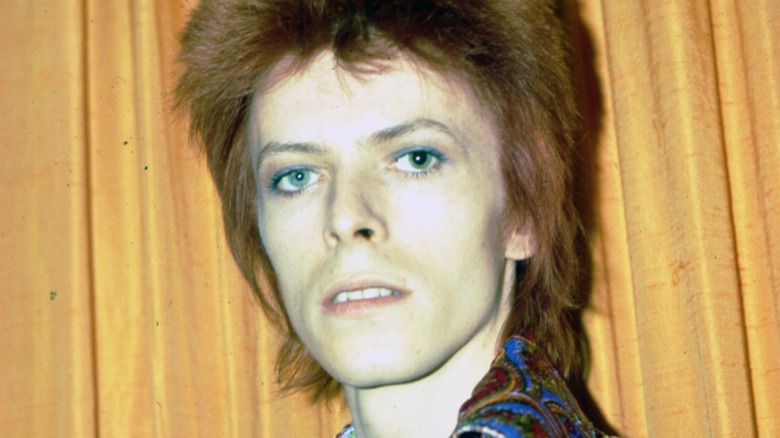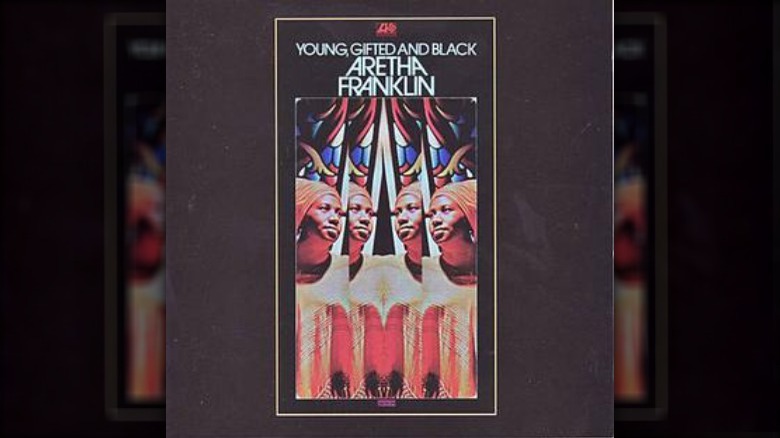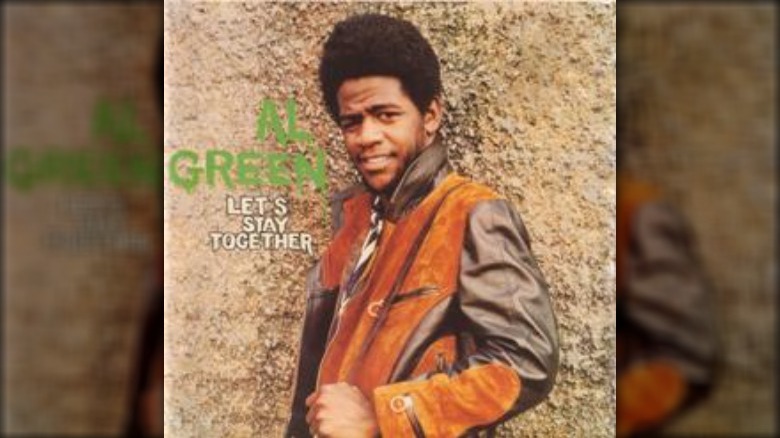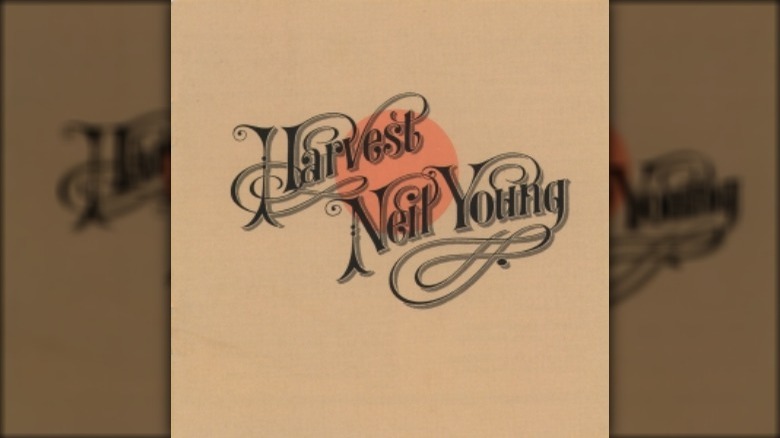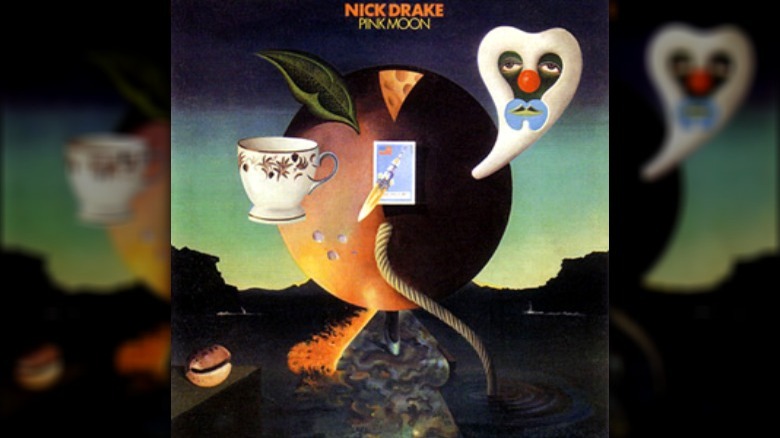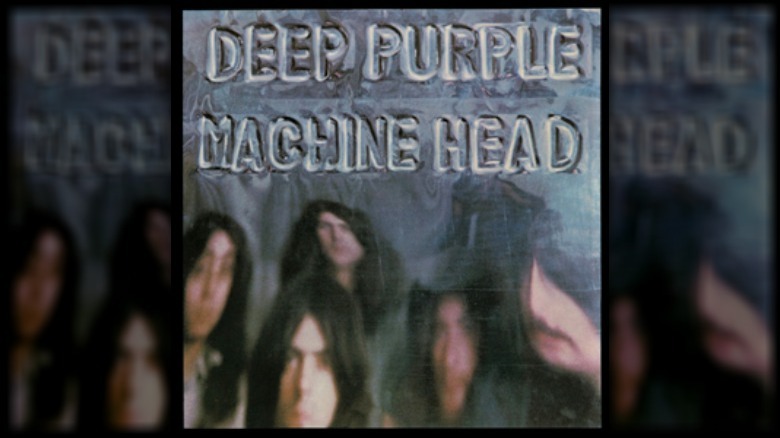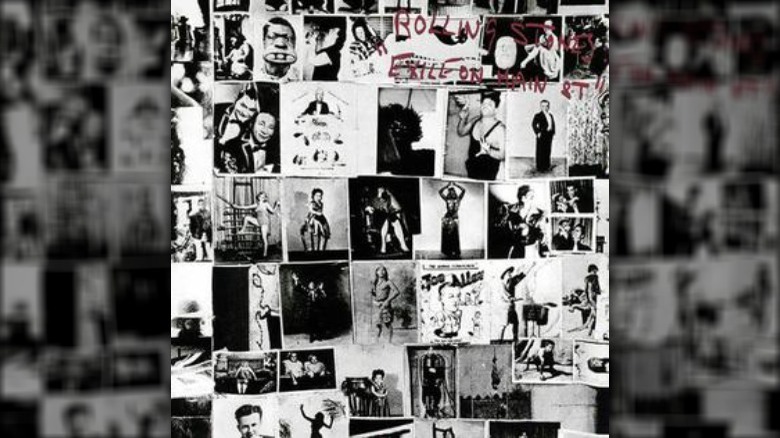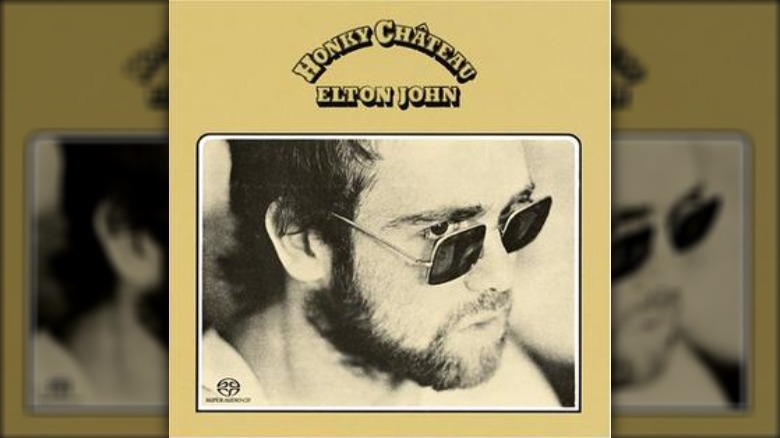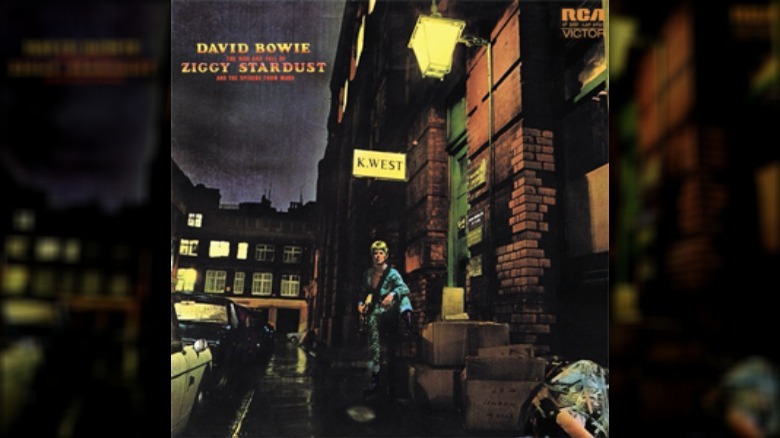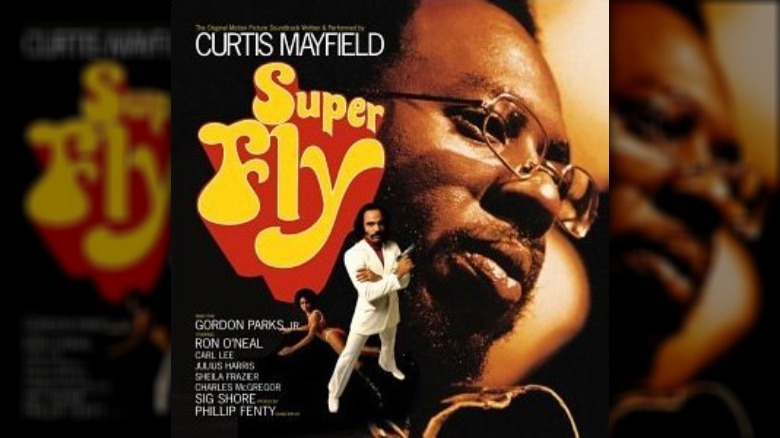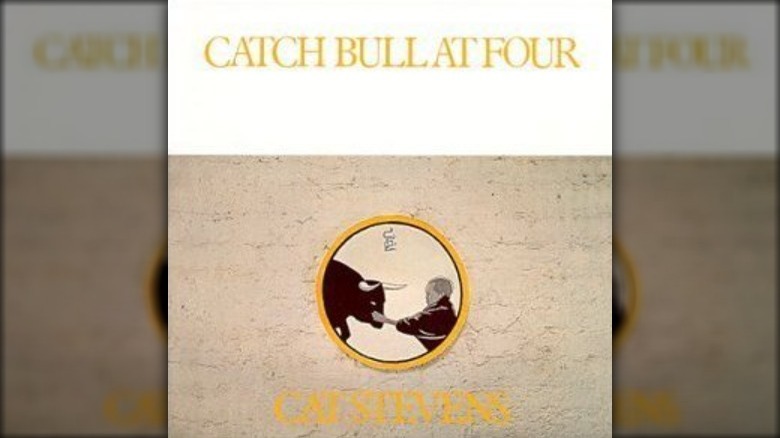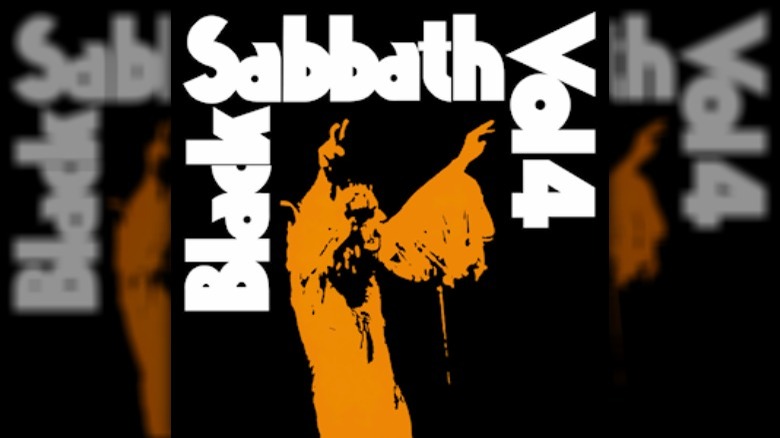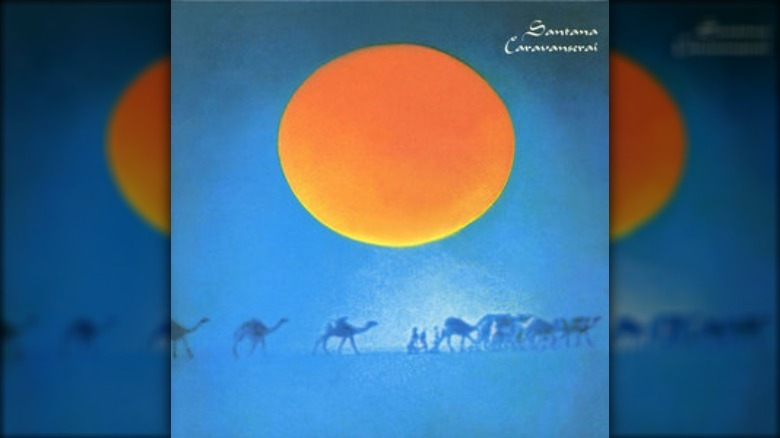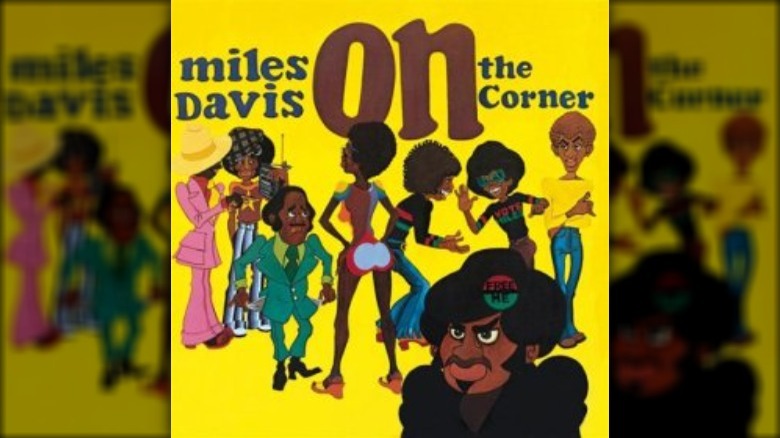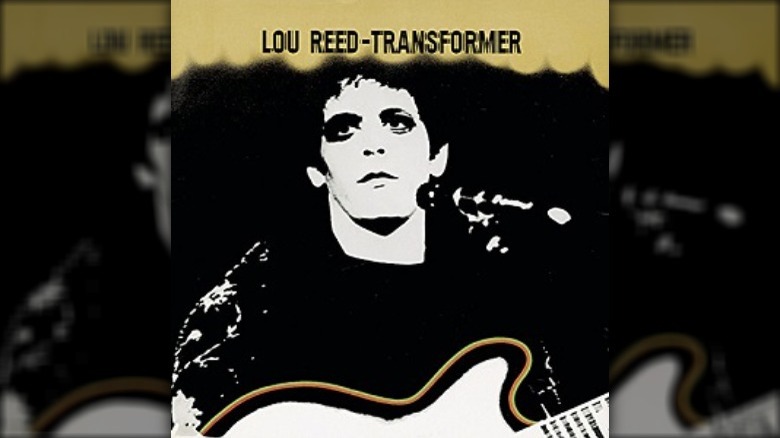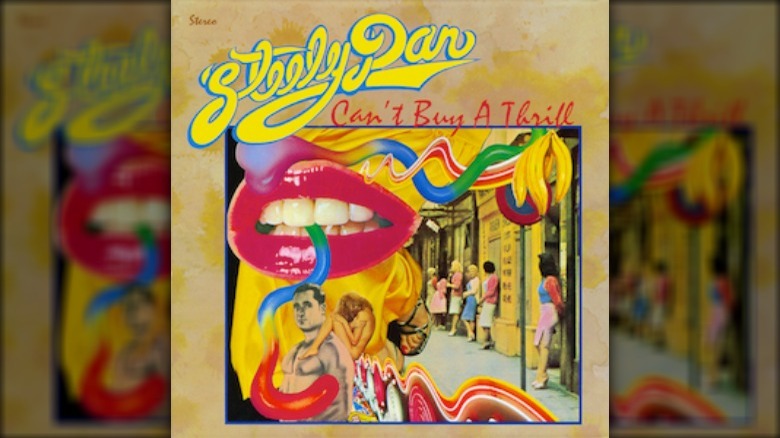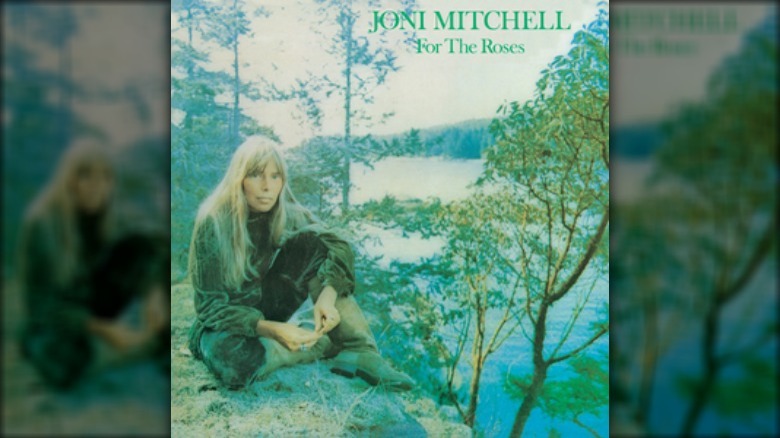Classic Albums Turning 50 In 2022
They say the past is a foreign country; they do things differently there. And it's certainly true with many things – such as fashion, design, or even some once-popular TV shows – too much time has passed for once vital things to retain their relevance.
But when it comes to music, though styles change and artists come and go, truly great albums still sound as great today as they ever did, however, many years have passed since they were first pressed to wax. The best soul and R&B of the past is still relevant, for example, directly influencing artists such as Anderson Paak. and Bruno Mars despite the dawning of evermore innovative sounds and recording techniques. Do today's songwriters make the songwriters of the past irrelevant? Or do they instead summon up the music of the past, representing it to us anew and letting us listen to it with new ears?
Half a century seems like it should represent an eon in the history of pop music, the focus of which, by its very nature, is novelty. But the music of 1972 is still among the world's most loved even half a century later: here are the stone-cold classics from that year still reverberating in 2022.
Aretha Franklin – Young, Gifted, and Black
The song "Young, Gifted and Black" was already familiar to American audiences when it became the title song of Aretha Franklin's seminal 1972 album, released on January 24. Originally written in 1969 as "To Be Young, Gifted and Black" by Nina Simone and Weldon Irvine as a dedication to her friend the playwright Lorraine Hansberry who died of cancer in 1965 aged 34, the song had also been successfully covered by Donny Hathaway on his debut album in 1970 (via NPR).
Now, Franklin adopted the Civil Rights movement anthem, which she reformulated as a moving gospel number, as the centerpiece for one of the most important albums of her career, which decades later publications such as Rolling Stone would rank among the greatest of all time. After fading somewhat in the late 1960s, in 1972 Franklin was in the middle of a career resurgence. As noted by the BBC, the album arrived a year after her phenomenal live album "Live at Fillmore West," which exhibited Franklin's growing appeal to rock audiences. "Young, Gifted, and Black" is an eclectic album, with covers of songs by Bacharach and David as well as Lennon and McCartney sitting alongside Franklin's own compositions, which, per the same source, are counted among the best of her career. It peaked at No. 2 on the Billboard chart.
Albumism argues that though the album's content may be considered apolitical, in execution – such as the cover art – Franklin's 1972 masterpiece is a display of defiant resilience in keeping with the spirit of the Black Power generation, a confident record that still speaks to us today.
Paul Simon – Paul Simon
Released on the same day as Aretha Franklin's "Young, Gifted, and Black," Paul Simon's self-titled solo album performed a similar act of recovery for a star who found themselves shattered by the end of the 1960s.
Per Ultimate Classic Rock, Simon found himself adrift following his tumultuous split from his longtime music partner Art Garfunkel in 1970, pausing his career to become a songwriting teacher in New York. However, he soon grew restless, and though he had established a winning sound on Simon & Garfunkel releases such as "Bridge over Troubled Water," Simon set out to widen his sonic palette in preparation for the launch of his bona fide solo career (as the same source notes, an album, "The Paul Simon Songbook," was released in the U.K. in 1965, though it was merely a collection of early recordings of material that would later be released under the name Simon & Garfunkel).
In Kingston, Jamaica, Simon recorded with members of both the Jimmy Cliff band and Toots & the Maytals to create the album's first single, "Mother and Child Reunion," incorporating elements of reggae that pushed the song to be a Top 5 hit (via Ultimate Classic Rock). Simon also traveled to Paris, recording with a wide range of musicians and producers to create a multi-textured album that also contains one of his more enduring classics: "Me and Julio Down by the Schoolyard," an upbeat Brazilian-infused tale of crime that Classic Rock Review claims abounds with "cryptic lyrical puzzles." The result is an eclectic album that offers pleasing hints of what was to come from Simon on his masterpiece, 1986's "Graceland."
Al Green – Let's Stay Together
The album that catapulted Al Green to superstardom, "Let's Stay Together" was the culmination of a fruitful collaboration between the singer and veteran producer Willie Mitchell, whose spacious arrangements offered the perfect foil for Green's "unusually expressive" vocal style, according to Rolling Stone.
As noted by Pitchfork, the title track has unfortunately grown to be something of a crooner's choice in the decades since its 1972 release. But the original Al Green recording remains surprisingly understated, exhibiting a level of finesse that subsequent covers have generally done away with, and stands as the cornerstone of an album of incredible vocal range. The song peaked at No. 1 on the Billboard Hot 100 chart and remains the vocalist's signature song.
But "Let's Stay Together," released January 31, only tells half of the story of Green's 1972 dominance. Because following his breakthrough to become one of Memphis soul's leading lights, Green was soon back in the studio, and in October of the same year he released a follow-up: "I'm Still in Love with You," which eventually went platinum and cemented Green's place in the soul firmament, per the RIAA. In 2010, "Let's Stay Together" was added to the Library of Congress' National Recording Registry, permanently assuring its artistic significance.
Neil Young – Harvest
Released on February 1, 1972, "Harvest," one of evergreen songwriter Neil Young's best-loved LPs, wasn't exactly a step into the leftfield for the then 26-year-old. A strict country-rock album apart from two orchestral diversions, according to Albumism the record was transparent in its relatability to the music of Young's contemporaries such as Bob Dylan, while at the same time paying homage to his own musical history as a part of Crosby, Stills, Nash, & Young, and his three solo album up to that point, including his masterpiece, 1970's "After the Goldrush."
But "Harvest" wasn't the sound of an artist treading water. Instead, the record emerged as the point at which the young musician gained mastery of his material and truly broke through as an artist equal – at least – to his influences. Songs like "The Needle and the Damage Done," exploring the era's destructive heroin epidemic – which, per Stat, was a direct consequence of the horrors of the Vietnam War – positioned Young as a compelling critic of the social issues of the early 1970s just had Dylan had been in the 1960s. But Young's artistry was also growing immensely popular. Per Vice, the album's first single, "Heart of Gold," went to the top of the charts, as did "Harvest" itself, eventually being named the No. 1 bestselling album of 1972.
Todd Rundgren – Something/Anything?
Though The Beatles had pioneered the concept of "studio as instrument" in the mid-1960s (via DW), by 1972 many of the possibilities of the ear's ever-improving recording technology had yet to be realized. And artists like Todd Rundgren, who in 1972 was in the midst of a creative flowering after a short-lived stint in the psychedelic rock group Nazz and a handful of semi-successful solo releases, were ready to push the envelope. It is Rundgren's fearless technical wizardry that would make "Something/Anything?," an ambitious double album, one of the best-loved records of 1972.
As noted by Ultimate Classic Rock, Rundgren decamped from his native New York to Los Angeles to begin recording his third solo album, where, in a cutting edge studio, the naturally solitary musician set about creating from scratch every note and vocal take entirely alone. Per Pitchfork, Rundgren's one-man-band concept was reportedly fueled by Ritalin, supplying him with the jittery creative energy needed to play the multiple roles of engineer and producer while also performing each and every vocal and instrumental take. After recording was interrupted by an earthquake, Rundgren returned to New York, where he recruited a number of musicians including the keyboardist Mark "Moogy" Klingman, who would become a long-term collaborator, to finish the album off, recording in these sessions some of the best songs of Rundgren's career, including "I Saw the Light," the lush and infectiously catchy opener to the LP.
"Something/Anything?" proved to be Rundgren's commercial highpoint, reaching No. 29 on the chart, while laying the groundwork for his critically-acclaimed psychedelic follow-up, 1973's "A Wizard, a True Star," per Ultimate Classic Rock.
Nick Drake – Pink Moon
But not all albums on this list prove to be happy breakthroughs; instead, some, like Nick Drake's "Pink Moon," released February 25, 1972, exist as artifacts from artists who, in their own lifetimes, remained tragically overlooked.
Drake, an innovative folk and blues acoustic guitarist from Warwickshire, England, who sadly died of an overdose in 1974 aged just 26, was a well-respected artist in the British folk scene, whose short career was frustrated by commercial difficulties amid the artist's own indifference to popular success, according to the L.A. Times. Drake recorded his 1969 debut "Five Leaves Left," while still a student at the University of Cambridge, and the album, like its 1971 follow-up, "Bryter Layter," received mixed reviews, with Drake's fragile and vulnerable style of songwriting incomparable to much of the music of the era; as noted by The Atlantic, the early '70s was a time of great pop showmen, and Drake, who was chronically shy and eventually gave up live performance altogether, had trouble meeting the expectations of both critics and audiences.
Drake's third and final album, "Pink Moon," sold even fewer copies than its predecessors at the time of its release, despite some critical praise for its stark sound and striking lyricism. However, Drake's profile suddenly grew years later, after the title song was used to soundtrack a 1999 Volkswagen commercial, one of the first ads on the internet which invited viewers to download the song. Per The Atlantic, the ad pushed "Pink Moon" onto the Billboard Hot 100, giving the sadly neglected artist an overnight American audience a quarter-century after his untimely death.
Deep Purple – Machine Head
Released on March 25, 1972, Deep Purple's sixth studio album performs the miracle of turning burning cinders into 24-carat rock gold.
Deep Purple was riding high in 1972. The band's previous album, 1971's "Fireball," had topped the charts in their native U.K., and they were well-established as a sellout live act playing their brand of tight traditional metal around the globe. They headed to Montreux, Switzerland, to record album number six, bringing with them the Rolling Stones Mobile Studio – a truck stocked with state-of-the-art recording equipment which they rented from the "Satisfaction" rockers, per NPR. The plan was to install the equipment at the Montreux Casino, in an attempt to produce an album that replicated Deep Purple's powerful live sound. But things didn't quite go as planned.
According to Dave Thompson's book, "Smoke On The Water: The Deep Purple Story," the casino burned to the ground as a result of a flare fired by an audience member at a raucous Frank Zappa and the Mothers of Invention concert the night before they were due to begin recording. Though the band was forced to rearrange their plans and relocate to the Grand Hotel, the story of the fire and the image of smoke from the burning casino floating out across Lake Geneva gave Deep Purple the inspiration for the album's standout track, "Smoke on the Water," which went on to become a huge international hit, with its parent album remaining on the Billboard charts for a full two years, per the same source.
The Rolling Stones – Exile on Main St.
On May 12, The Rolling Stones released their first double album, a release which today is considered the long-running band's best work by publications such as Rolling Stone. But as with Deep Purple's "Machine Head," this creative peak didn't emerge out of favorable circumstances, but rather a period steeped in difficulty and division.
To begin sessions on what would be the 12th Stones album to be released in America, the band took the very same mobile studio Deep Purple had borrowed to the South of France, where guitarist Keith Richards had rented a sumptuous villa. According to The Guardian's Sean O'Hagan, Richards became the guiding light of what would become "Exile," with musicians having to fall in jagged line behind him and his eccentric rhythms. Rather than tight and controlled, the sessions were improvisational, with various musicians coming in and out while many of the band's core members, including Mick Jagger himself, took a supporting role.
Charlie Watts, the Stones' founder member and stalwart drummer who died in 2021, summed up the atmosphere like so (via The Guardian): "A lot of 'Exile' was done how Keith works ... which is, play it 20 times, marinade, play it another 20 times. He knows what he likes, but he's very loose ... Keith's a very bohemian and eccentric person, he really is."
Elton John – Honky Château
The same month, fellow Brit Elton John finally broke America, with the release of "Honky Château," an album which would herald John's domination of the charts on both sides of the Atlantic for the rest of the decade.
Building on the quiet commercial success in the U.S. of 1971's "Madman Across the Water," John and his team assembled in a country house 25 miles north of Paris with the intention of making a record that would shock listeners and defy their expectations; according to engineer Ken Scott, the new record would serve as the starting point of the second chapter in John's career, representing a break from the part, per udiscovermusic.
As noted by Rolling Stone reviewer Jon Landau, "Honky Château" is a lyrically polyphonic album, with John, performing the lyrics of his career-long co-writer Bernie Taupin, channeling a suite of disparate characters and evoking their obsessions and unfulfilled desires. "Honky Château" was John's first LP to top the U.S. album chart, a feat he miraculously matched with his next six studio albums in succession.
David Bowie – The Rise and Fall of Ziggy Stardust and the Spiders from Mars
It is difficult to imagine that a concept album about an alien who appears on earth to warn humanity of the coming apocalypse – heralded through the album's opener, "Five Years" – could become a popular smash hit. But that is what happened with "The Rise and Fall of Ziggy Stardust and the Spiders from Mars," the fifth album by British rocker David Bowie, which hit record stores on June 16, 1972.
Writing on behalf of the Library of Congress, who added the album to the National Recording Registry in 2016, the year of Bowie's death, archivist Susan E. Booth traces the story of the eponymous Ziggy, who, preaching a rock 'n' roll doctrine of peace, love, and hedonism, falls victim to his own mythology before being destroyed on stage by his own followers – a technicolor metaphor for the life cycle of Bowie's glam rock contemporaries. As Booth argues, Bowie distanced himself from the typical rock persona of the day, through the adoption of the Ziggy persona, with the singer explaining: "Until that time, the attitude was 'What you see is what you get.' It seemed interesting to try to devise something different, like a musical where the artist onstage plays a part."
Indeed, Bowie was considering reformulating the Ziggy concept as a full-blown musical extravaganza the following year, before realizing that the freedom of multiple personas might be the key to a career of constant creative self-renewal. Ziggy was just the first of many characters that Bowie would adopt in the decades that followed, but in many ways, the rock 'n' roll alien still ranks among his greatest work.
Curtis Mayfield – Super Fly
Curtis Mayfield's third studio album couldn't help but be a smash hit when it arrived on July 11, 1972. The reason? That "Super Fly" was also the soundtrack to the classic blaxploitation movie of the same name starring Gordon Parks Jr., which was released to commercial success and critical acclaim the following month.
As noted by AllMusic, Mayfield was an artist perfectly placed to provide the music for the film. Since leaving The Impressions, the group with whom he enjoyed his first taste of success, in 1970, Mayfield had made a name for himself as a poetic and insightful chronicler of Black American life. And while his early work exuded the optimism and confidence of the Civil Rights era in such songs as "Move On Up" and "Keep On Pushing," when the time came to capture the essence of "Super Fly," Mayfield proved himself an artful lyricist, able to narrativize the lives of the film's characters without moralizing (though, as the BBC notes, "Super Fly" carries an unashamedly anti-drug message) nor resorting to glamorization ... though the tracks' instrumentals remain undeniably some of the more effortlessly cool in all of popular music.
Containing a trinity of smash hit singles including "Freddy's Dead," "Pusherman," and, of course, the infectious title track, "Super Fly" remains a soul/funk touchstone for generations of musicians looking to get hip.
Cat Stevens – Catch Bull At Four
1970's "Tea for the Tillerman," with its smash single "Wild World," had finally established Cat Stevens as a true international star after a difficult start to his career in the 1960s, crafting songs that would later prove to be classics, such as "The First Cut is the Deepest," which would later become a huge hit for Rod Stewart, according to Stevens' website. But it was only in 1972 that Stevens finally reached his potential, with the release of "Catch Bull At Four."
Per udiscovermusic, Steven's star had continued to ascend throughout 1971, the year he released his well-received album "Teaser and the Firecat," which climbed to No. 2 on the Billboard chart. "Catch" went one better, sitting at the top of the American charts for three weeks off the back of an extensive U.S. touring schedule in support of the album.
Catstevens.com cites Stevens' 1972 record as the culmination of a "spiritual progression" ongoing throughout his previous work, triggered perhaps by the artist's growing reflection on life and the nature of existence following his hospitalization with near-fatal tuberculosis in 1969, and which would set the tone for his Muslim rebirth and renaming as Yusef Islam in 1977.
Black Sabbath – Vol. 4
September brought one of the heaviest releases of the year in the form of Black Sabbath's fourth album in just over two years. Pitchfork comes short of describing "Vol. 4" as Sabbath at their very best – that title, they say, goes to 1970's "Paranoid" – but their 1972 offering remains an "indispensable" classic of the metal genre.
By the time recording commenced in May of that year, the band was already entering a period of destabilization which would come to characterize their ensuing career. According to guitarist Tommy Iommi, who produced the album, at the time of "Vol. 4" Sabbath was operating under the influence of industrial amounts of cocaine. In a chapter titled "Going Snowblind," from his 2011 autobiography "Iron Man," Iommi describes how the band had transported the drugs to their base in Bel Air hidden inside "sealed box[es] the size of a speaker." Unsurprisingly, Iommi cites the drug as a reason for the band's productivity at the same time it pushed them to the point of collapse.
The band's drug use became a central theme of the album, with "Snowblind" and "Wheels of Confusion" offering a candid insight into how their collective habit threatened to become an existential crisis. But aside from the lyrics, the album also contains some of Sabbath's greatest riffs, with classics such as "Supernaut" and "Under the Sun" casting a long shadow over the future of heavy metal.
Santana – Caravanserai
If any band should mourn the death of the 1960s it's Santana, whose seminal performance at the Woodstock Music and Art Fair in 1969 is still considered by many to be a high point of the decade's counterculture.
But by 1972, the group led by guitarist Carlos Santana was ready to move on. The result was the innovative "Caravanserai," their fourth album under the Santana name, released on October 11 that year. Containing diffuse influences from rock to salsa and potentially uncommercial in its boldness, the album nevertheless peaked at No. 8 on the Billboard Hot 100 and is held today as a jazz-rock "gem," per AllMusic.
Writing for Rolling Stone in 1976, renowned music critic Ralph J. Gleason explains that "Caravanserai" is linked to Santana's previous three studio offerings by the same atmosphere of "Latin excitement," but that the band transcends its earlier work through a new-found spirituality that positions them in the tradition of jazz innovators such as Miles Davis as much as it recalls the pounding tribal grooves that made Santana firm favorites among hippies and other such musical non-conformists. In "Caravanserai," Santana's "street-edged" sound combines with a jazz swing that "speaks directly to the universality of man," to create one of the decade's most multilayered and complex LPs.
Miles Davis – On The Corner
It is a specific Miles Davis album, "On The Corner," released on the very same day as "Caravanserai" and on the same label, Columbia Records, to which Ralph J. Gleason draws his comparisons in his 1976 Rolling Stone article. However, it must be said that Gleason was certainly in the minority in his approval of one of Davis' most divisive works.
A continuation of Miles' experimentations in jazz fusion, "On The Corner" was met by a wave of almost universal condemnation from critics, listeners, and musicians alike upon its release, and was an overwhelming commercial flop, according to Fact Magazine, who, illustrating the album's eventual critical reappraisal, placed it at No. 11 in their list of the 100 best albums of the 1970s in 2014. As Fact notes, "On the Corner" begins abruptly, as though the listener is cut into the middle of an ongoing groove. What follows is a hard but danceable weaving of disparate genres so relentless that, as Gleason notes, it is difficult to approach it as an album of separate songs, (though the sleeve lists nine compositions, split over four tracks, per Discogs). "On the Corner" works better when consumed as a whole, which, no doubt, has led some reviewers, such as Nashville Scene's Jack Silverman, to dismiss the album as an exercise in "arrogance."
Nevertheless, listeners have warmed to "On the Corner" over the course of five decades, with Stereogum's Miles Bowe describing how the album presages many familiar modern genres, hip-hop, dub, and electronica among them.
Lou Reed – Transformer
1972 was a seismic year for Lou Reed, who just two years before had walked away from one of the most influential bands in rock history: The Velvet Underground.
The year started off poorly. As noted by Pitchfork, in April Reed released his self-titled solo debut. Recorded the previous December and January, the album, mainly consisting of Velvet Underground offcuts, was a commercial and critical failure, so much so that it seemed to signal the end of Reed's career before he'd even made it out of the gates. Luckily though, Reed had one famous fan who was willing to help turn things around: David Bowie.
Taking over production alongside guitarist Mick Ronson, Bowie laid out an eclectic sonic palette that perfectly complemented Reed's post-VU songwriting, allowing the stomping opener "Vicious" to cohere with the soaring "Satellite of Love," and establishing a sparse fragility that would characterize both "Walk on the Wild Side" and "Perfect Day," which would both go on to become signature songs in Reed's catalog. "Transformer" was a triumph, a career-high that signaled Reed's hard-won emergence as a solo artist in his own right.
Steely Dan – Can't Buy A Thrill
Recorded in L.A. in 1972, "Can't Buy a Thrill" announced Steely Dan – comprising core members Donald Fagan and Walter Becker – as an innovative and exciting pop-rock force. But as noted by Classic Rock Review, behind the scenes things didn't quite come together as effortlessly as the flawless compositions would have you believe.
Despite Steely Dan's sleek production and performances, the pair had been plagued by both disappointments and doubts. Per Ultimate Classic Rock, Fagan and Becker had first become friends at Bard College, New York, in the late 1960s, and quickly formed a songwriting partnership that saw them pen numbers for Barbara Streisand and Three Dog Night, which sadly enjoyed little cut through. The pair succeeded, however, in convincing the label they wrote for, ABC/Dunhill, to allow them to form their own band and release a record. However, Fagan, who would go on to become Steely Dan's lead vocalist, initially refused to sing on their debut and concocted a plan to enlist guest vocalists to feature on each of their songs. Drummer Jim Hodder thus sang on "Midnight Cruiser," while the singer-songwriter David Palmer took vocal duties on both "Brooklyn" and eventual fan favorite "Dirty Work," before Fagan was convinced of his abilities enough to give his voice to the rest of the album.
Despite Fagan's trepidation and Steely Dan's ambitious scaling of greater and greater pop-rock heights throughout the '70s, "Can't Buy a Thrill" still stands shoulder-to-shoulder with the duo's best work.
Joni Mitchell – For The Roses
In November 1972, Canadian folk singer Joni Mitchell released "For the Roses," her fourth studio album and the follow-up to her critical and commercial hit, 1971's "Blue." Though "Blue" is generally considered among her fans to be her greatest album – it certainly remains her most popular – "For the Roses" is its artistic equal, at least according to the academic David Yaffe, who wrote about the album on behalf of the Library of Congress on its inclusion in the National Recording Registry in 2007.
Written predominantly at Mitchell's secluded forest hideaway in Sechelt, British Columbia, many of the songs on "For the Roses" deal with the singer's tempestuous love affair with fellow musician James Taylor, who had split with the heartbroken Mitchell the previous year. While the title track and "Woman of Heart and Mind" express the emotional turmoil and their break-up, "Cold Blue Steel and Sweet Fire" offers a biting critique of Taylor's heroin use, while "Let the Wind Carry Me" and "Barangrill" offer contrasting meditations on contentment and the pressing need for freedom.
The album's single, "You Turn Me On, I'm a Radio," hit No. 25 on the Billboard Hot 100. It was an ironic twist, as for Mitchell, who was already at the age of 28 growing tired of fame, the song was intended as "my first farewell to show business."
